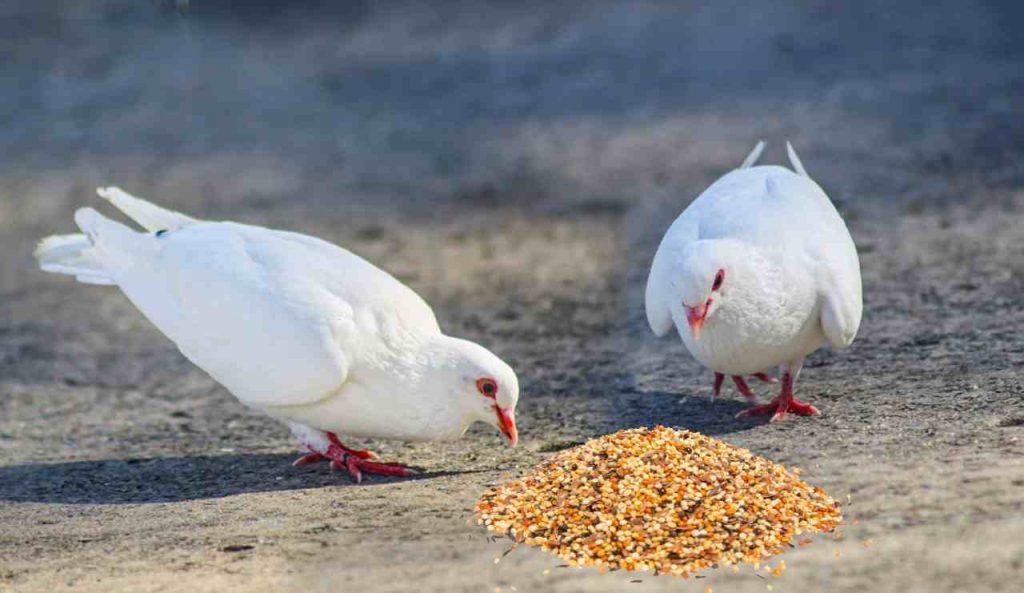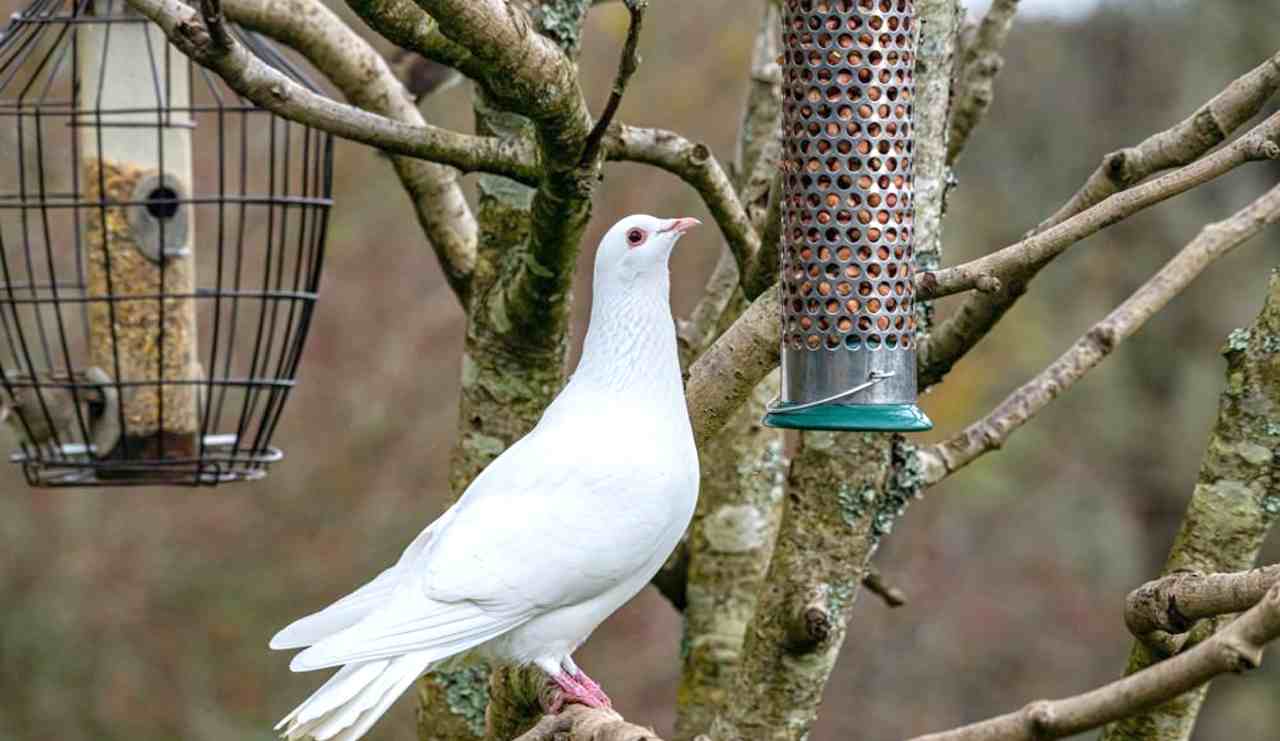With its soft cooing calls and slim silhouette, the mourning dove is a familiar backyard bird across much of North America. But what exactly do these understated doves eat to sustain themselves throughout the year? Mourning doves have a diverse diet that fluctuates based on seasonal availability. By understanding mourning dove feeding ecology, we can better provide food sources to attract and support these graceful visitors.
Overview of Mourning Dove Diet
Mourning doves are primarily granivores, meaning they eat seeds as the main component of their diet. However, they are opportunistic foragers and will supplement seeds with other food types depending on availability:
- Seeds: The bulk of their diet, including waste grains, grass seeds, pine seeds, millet, safflower, sunflower, and more.
- Fruits: Berries, raisins, currants, grapes, elderberries, chokecherries, and other small fruits.
- Insects: Snails, beetles, caterpillars, ants, grasshoppers, and other protein-rich insects, especially during breeding season when insect abundance peaks.
- Grit: Small pebbles and bits of gravel help mourning doves grind and digest seeds and grains in their muscular gizzard.
- Greens: Leaves, sprouts, shoots, and leaf buds add variety.
By shifting food sources throughout the year, mourning doves can acquire the specific nutrients required at different life stages. Their diverse palate allows them to take advantage of seasonally fluctuating resources.
Where Do Mourning Doves Forage for Food?
Mourning doves forage in a variety of habitat types when searching for their daily diet:
- Open habitats with scattered trees and shrubs – allows easy access to seeds on the ground.
- Forest and woodland edges – feeds on seeds of emerging herbaceous plants.
- Grassy fields – feeds on grass and weed seeds.
- Backyard bird feeders – visits for millet, safflower, corn, wheat, and sunflower seeds.
- Agricultural areas – gleans waste grain and seeds from croplands and barns.
- Roadsides – eats grit and fallen seeds along gravel shoulders.
- Berry patches – feeds on ripening berries and fruits.
- Nesting areas – finds calcium-rich snail shells.
By foraging across diverse sites, mourning doves can find adequate nutrition while minimizing competition with other birds. Their habitat generalist nature gives them flexible food sourcing options.

Unique Adaptations for Feeding
Mourning doves have several physical and behavioral adaptations that allow them to capitalize on their seed-heavy diet:
- A slim, aerodynamic body shape lets them perch close to the ground to grab fallen seeds. Their silhouette blends into grassy areas.
- A small lightweight head with a narrow pointed bill is efficient for picking up small seeds.
- Large dark eyes provide excellent vision to spot seeds and grains on the ground.
- Their perch and coo behavior announces territory ownership and food resources to attract a mate.
- A strong gizzard pulverizes food. Ingested grit aids this grinding process.
- They swallow seeds whole and regurgitate the indigestible husks.
- Fat deposits and low metabolism provide efficiency and weight gain to help survive periods of food scarcity.
- Mourning doves fly from the ground quickly to evade predators while feeding in the open.
These physical, physiological, and behavioral traits help mourning doves locate and consume high-quality seed food sources throughout the year.
Do Mourning Doves Need to Drink Water?
Mourning doves meet most of their hydration needs from the food they eat. However, they will visit open water sources like bird baths and ponds occasionally during dry periods to drink.
Some strategies mourning doves use to maintain adequate hydration include:
- Eating juicy fruits and berries high in moisture content.
- Deriving preformed water from insects, snails, and vegetation.
- Obtaining metabolic water as a byproduct of digesting seeds and food.
- Absorbing early morning dew and raindrops while foraging on the ground.
- Utilizing kidneys specialized for water retention.
- Cooling body temperature through evaporation from their respiratory system.
Access to open fresh water provides mourning doves with an extra hydration buffer as needed. But they can generally get enough water from food alone if other sources are limited.
Does Diet Vary by Region?
The specific menu of a mourning dove may vary somewhat across their expansive range based on regional habitat and food availability:
Northeast – more mast crops like beechnuts and acorns supplement open habitat seeds.
Southeast – diverse options like pine seeds, black gum fruits, and persimmons.
Midwest – corn and wheat from agricultural areas mix with prairie seeds.
Southwest – more cactus fruits and seeds from arid-adapted plants.
Northwest – fruits from mountain ash, chokecherries, and blackberries.
However, while the side dishes may differ, the main course remains seeds and grains. Their flexible palate lets them thrive across diverse ecosystems.
Supplemental Feeding Tips
You can attract mourning doves to your yard by providing their preferred food sources:
- Ground feed with a mix of millet, safflower, cracked corn, and black oil sunflower seeds.
- Add a platform or hanging feeder with sunflower chips.
- Scatter millet, sorghum, wheat, oats, and rye grains on the ground.
- Offer dried fruit like raisins, currants, cherries, and berries.
- Provide grit like sand, crushed eggshells, oyster shell, or poultry grit.
- Include a fresh water source like a ground birdbath.
Feeding mourning doves supplements the nutrition they can’t find in the wild and supports them during stressful times of year.
The Bottom Line
In summary, mourning doves are adaptable omnivores whose diet shifts with seasonal availability. Their primary food strategy revolves around plentiful seeds interspersed with fruits, greens, and insects. Supplemental feeding with their favored foods can help attract these graceful visitors to your yard. Understanding mourning dove dietary ecology allows us to support their nutritional needs throughout the year.
Sources:
The Cornell Lab of Ornithology
Missouri Department of Conservation
- 2025 Texas Hunting Season: Latest Dates & New Laws! - March 14, 2025
- Maine Hunting Seasons 2025 New Dates & Limits - March 14, 2025
- Indiana Hunting Season 2025-2026 New Dates & Rules! - February 9, 2025




